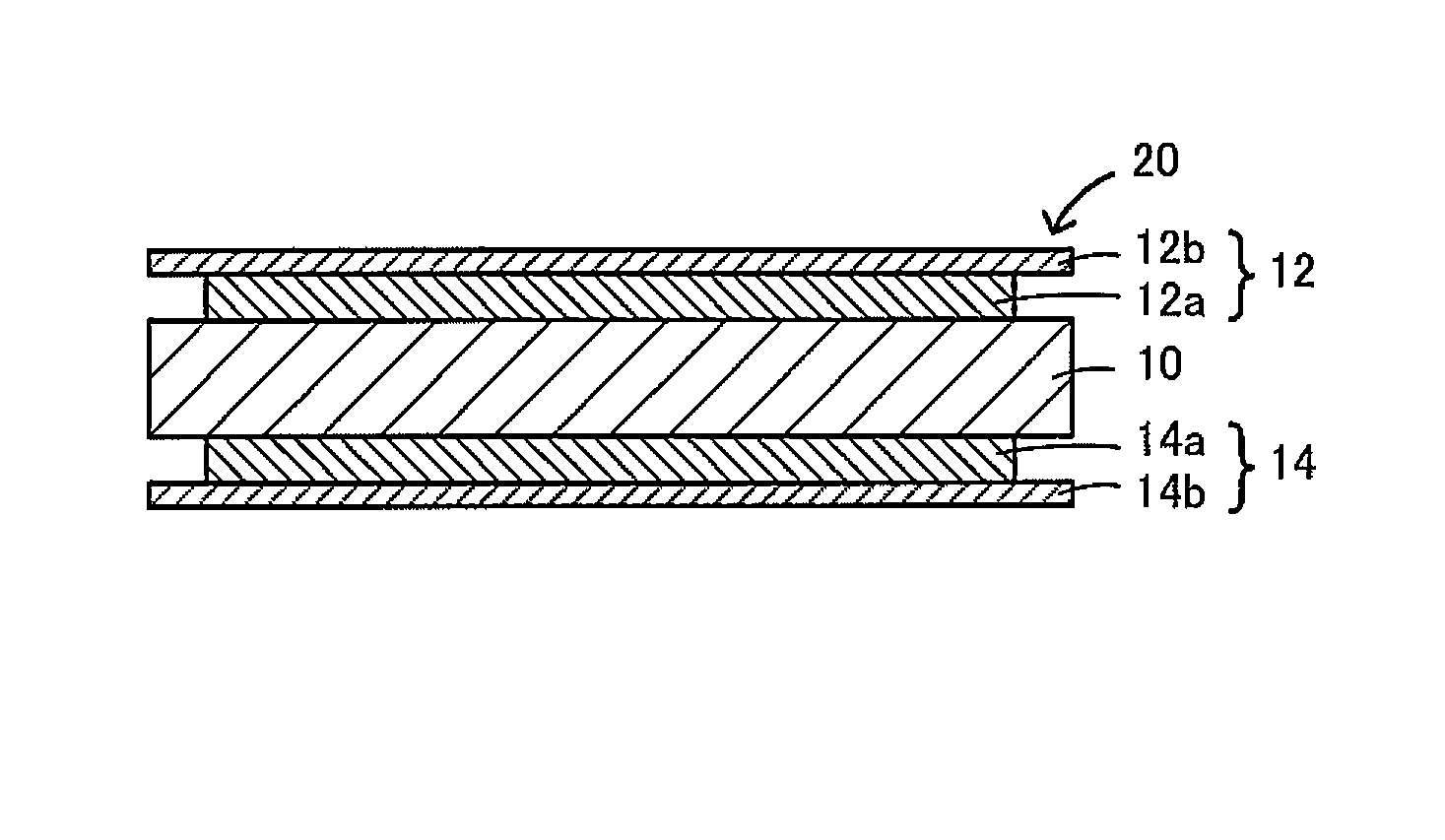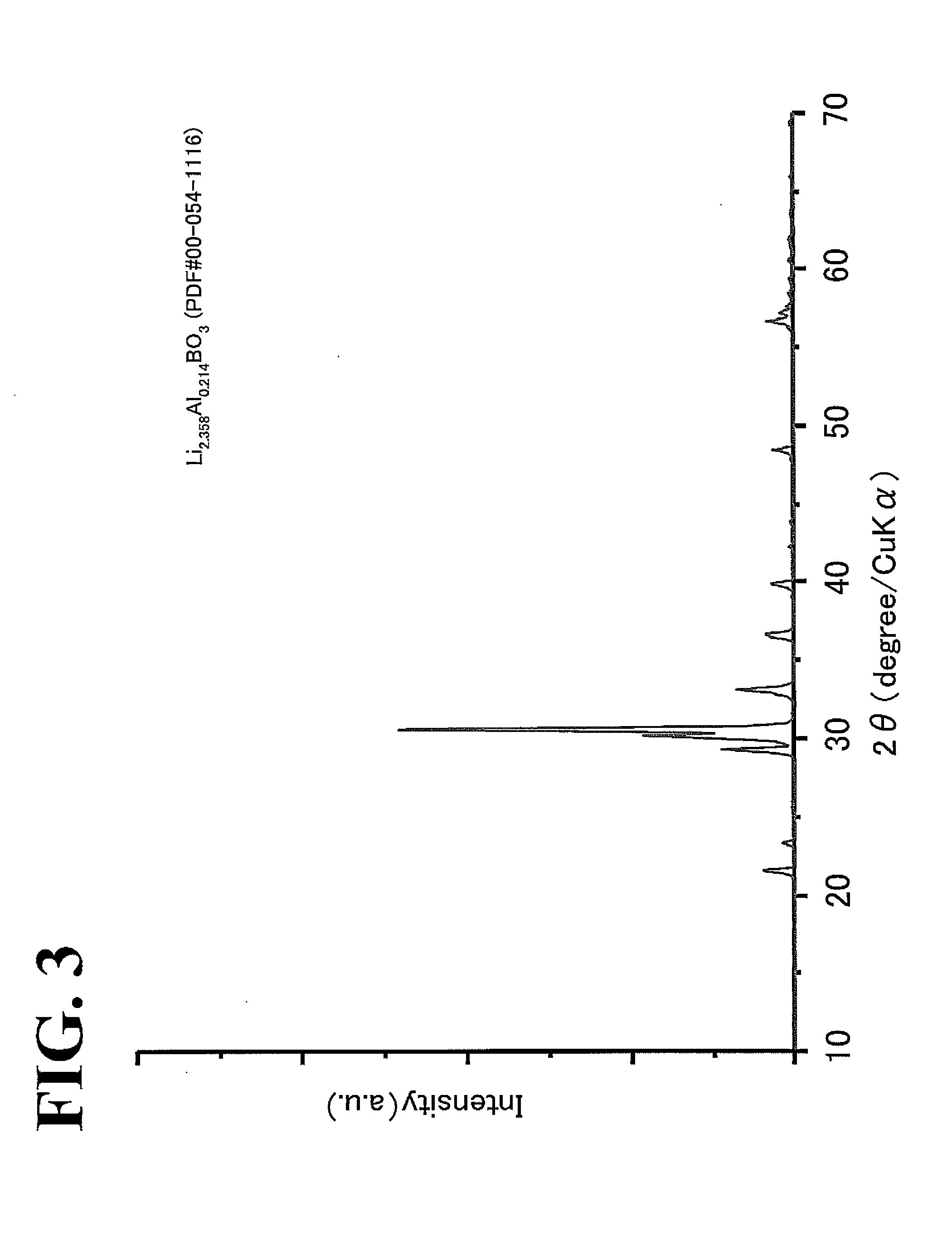All-solid-state lithium secondary battery and method for producing the same
a lithium secondary battery, all-solid-state technology, applied in the direction of non-metal conductors, flat cell grouping, sustainable manufacturing/processing, etc., can solve the problem of insufficient energy density, achieve low melting point, reduce lithium-ion conductivity, and increase the energy density of all-solid-state lithium secondary batteries
- Summary
- Abstract
- Description
- Claims
- Application Information
AI Technical Summary
Benefits of technology
Problems solved by technology
Method used
Image
Examples
example 1
(1) Preparation of Solid Electrolyte
[0051]Li2CO3, La(OH)3, ZrO2, and Nb2O5 were used as starting materials. The starting materials were weighed in such a manner that the stoichiometric ratio of the general composition Li6.75La3Zr1.75Nb0.25O12 (hereinafter, also referred to as “LLZONb”) was achieved. The starting materials were mixed and pulverized for 4 hours in ethanol with a planetary ball mill (300 rpm, zirconia balls). The mixed powder of the starting materials (inorganic materials) was separated from the zirconia balls and ethanol and then calcined in an Al2O3 crucible at 950° C. for 10 hours in an air atmosphere. Next, in order to compensate the deficiency of Li in firing, Li2CO3 was added to the calcined powder in such a manner that the amount of Li added was 5 at % with respect to the amount of Li in the inorganic materials. To pulverize and mix the calcined powder, the calcined powder was pulverized and mixed in ethanol with a planetary ball mill (300 rpm, zirconia balls) f...
examples 2 to 4
[0062]A battery of Example 2 was produced in the same process as in Example 1, except that baking was performed at 700° C. A battery of Example 3 was produced in the same process as in Example 1, except that baking was performed at 800° C. A battery of Example 4 was produced in the same process as in Example 1, except that baking was performed at 900° C.
example 5
[0063]A battery of Example 5 was produced in the same process as in Example 1, except that the following “(3′) Preparation of flux paste” was performed in place of the foregoing “(3) Preparation of flux paste”.
[0064](3′) Preparation of Flux Paste
[0065]Li2CO3, B2O3, and γAl2O3 were used as starting materials. The starting materials were weighed in such a manner that the molar ratio of Li2CO3 to B2O3 to γAl2O3 was 2.358:1:0.107 (a total weight of about 50 g). The starting materials were mixed and pulverized for 1 hour in ethanol (100 ml) with a planetary ball mill (300 rpm, zirconia pod (500 cc), zirconia beads (3 mm in diameter, 500 g)). After desolvation was performed in a dryer set at 80° C., the raw-material mixed powder was separated from the zirconia beads with a sieve. The resulting powder was heat-treated in an alumina crucible at 600° C. for 12 hours in air to synthesize a powder. The resulting powder was subjected to XRD measurement with TTR, manufactured by Rigaku Corporati...
PUM
| Property | Measurement | Unit |
|---|---|---|
| temperature | aaaaa | aaaaa |
| temperature | aaaaa | aaaaa |
| melting point | aaaaa | aaaaa |
Abstract
Description
Claims
Application Information
 Login to View More
Login to View More - R&D
- Intellectual Property
- Life Sciences
- Materials
- Tech Scout
- Unparalleled Data Quality
- Higher Quality Content
- 60% Fewer Hallucinations
Browse by: Latest US Patents, China's latest patents, Technical Efficacy Thesaurus, Application Domain, Technology Topic, Popular Technical Reports.
© 2025 PatSnap. All rights reserved.Legal|Privacy policy|Modern Slavery Act Transparency Statement|Sitemap|About US| Contact US: help@patsnap.com



